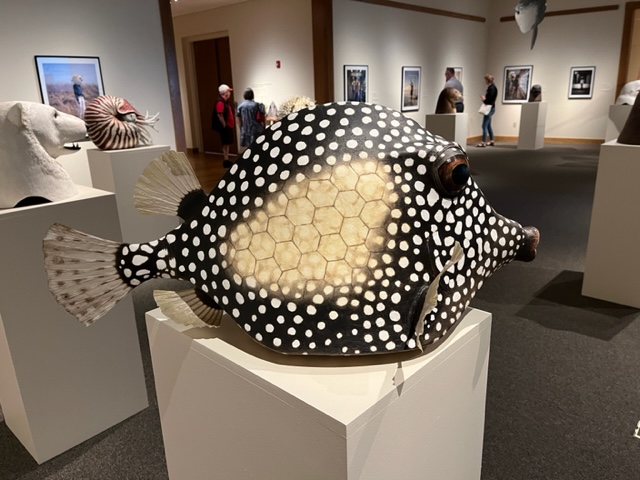
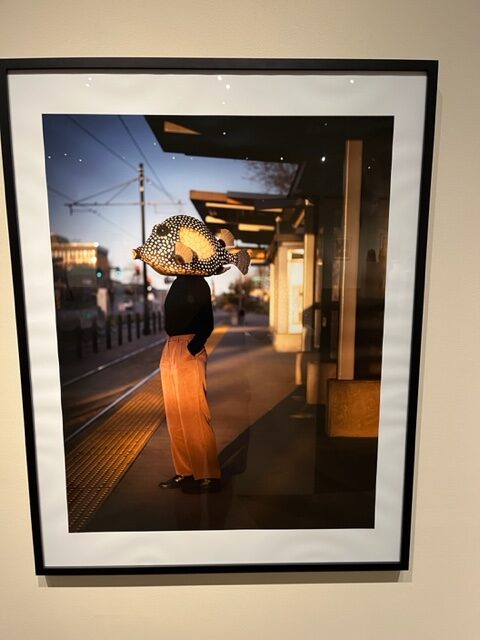
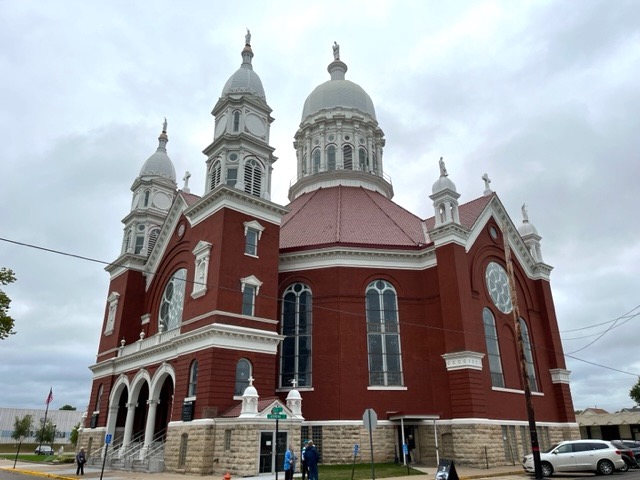
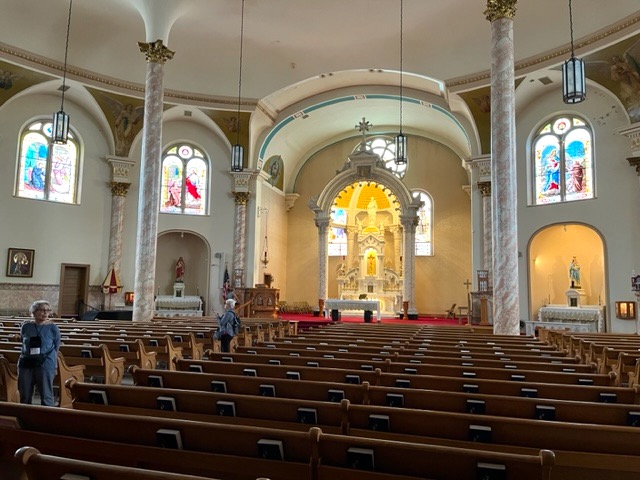
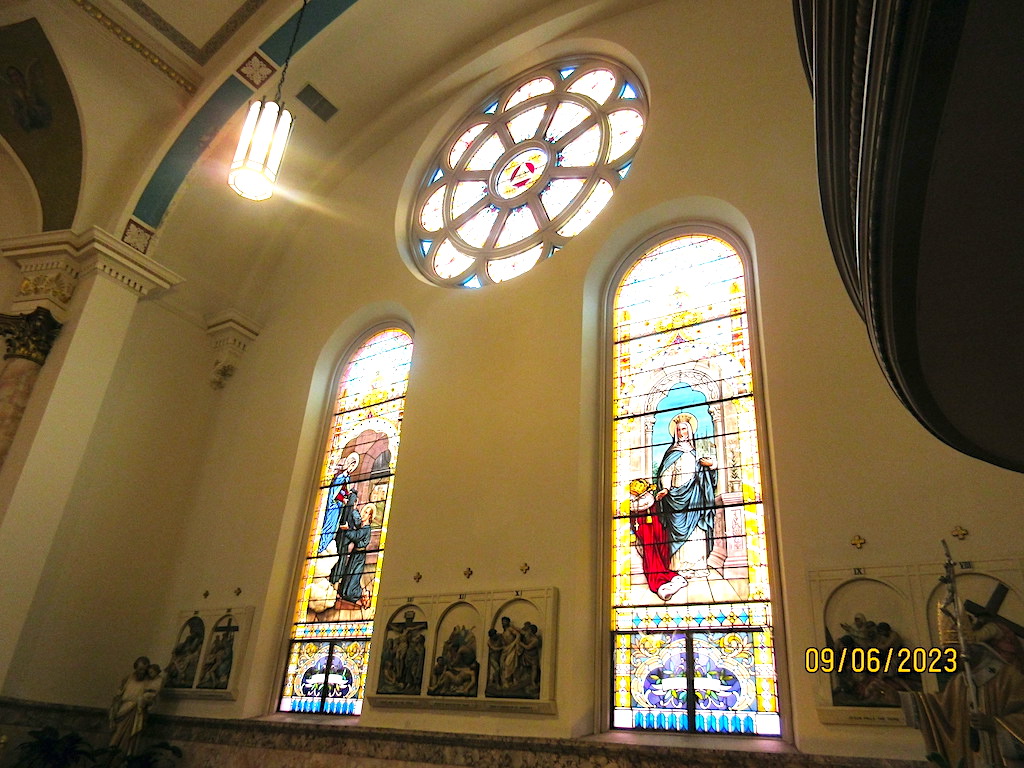
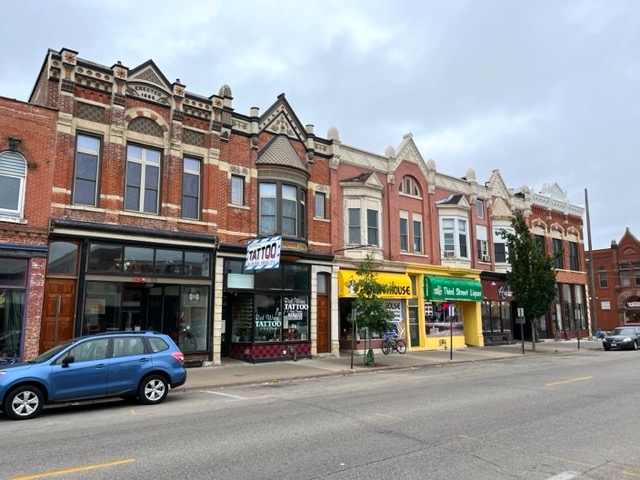
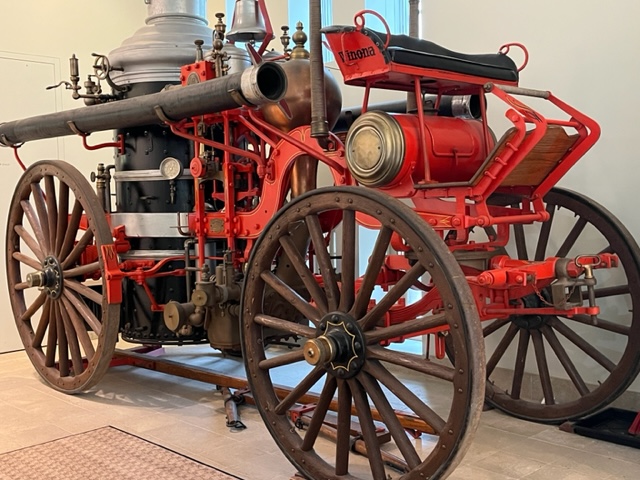
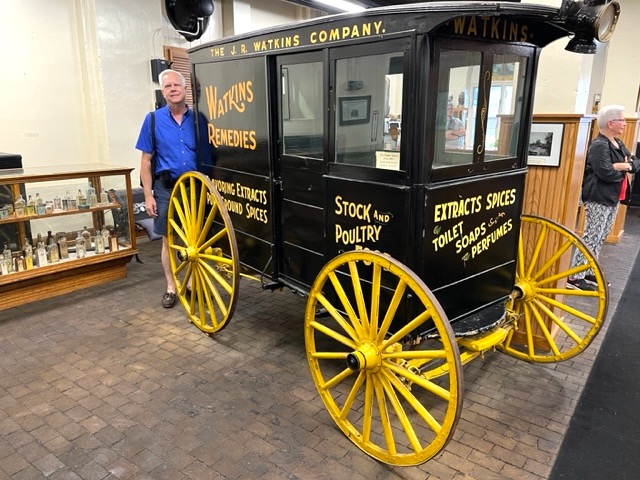
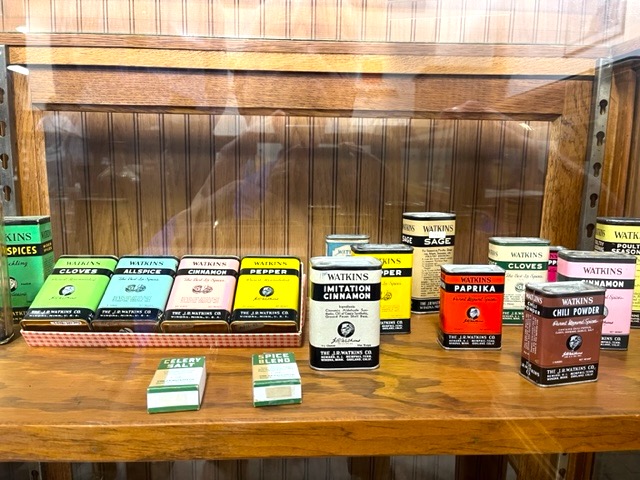
Winona gets its name from the sorrowful legend of a young Dakota Sioux maiden of the area who leapt to her fateful end at nearby Maiden Rock in order to avoid marriage to a betrothed she did not love. Winona has a population of about 27,500 inhabitants. European immigrants settled the area in 1851 on the site of a Native American village named Keoxa. The original settlers were immigrants from New England but soon Germans, Poles, and Yankees worked together building businesses based on lumber, wheat, steam boating and railroads. The town is not very diverse as reflected in the racial makeup of Winona in 2020 census which was nearly 90% white.
On our stop in Winona, Minnesota, Mark visited the Minnesota Marine Art Museum to explore the human relationship with water. The museum’s collection focuses on traditional marine or maritime art but also includes many fine art pieces from both European and American artists such as Picasso, Monet, Van Gogh and Georgia O’Keeffe. A favorite exhibit was a young artist by the name of Liz Sexton and her paper mache masks. There was an entire gallery room filled with paper mache animal masks beautifully painted depicting a wide variety of animals. Once Liz completes the masks she then wears the masks out in public and has photos taken of her with the masks. Very intriguing.
Our next stop was at the Winona County History Center in downtown Winona which displays all sorts of local history. The history center is housed in the 1915 Armory Building as well as a contemporary building called the Laird Norton Addition. The upper level featured a time line from the 1800’s to modern day showing artifacts from each decade of its history. On the lower lever there were replicas of things like a local general store, a steam boat as well as items like horse drawn carriages, an antique fire engine and many photographs and historical documents of Winona.
We then stopped in at the Watkins Museum and Store, the site of the Watkins Company store dating back to 1885 when they started selling products such as J.R. Watkins Liniment, which was their very first and most popular product. J.R. Watkin began selling the liniment back in 1868 door to door before moving the company to Winona in 1885 where it remains today. They claim to have been the first American company to offer a “money back guarantee” when Watkins made most of his sales going door to door. They originally sold products like pepper, vanilla extract, cinnamon, ginger, cloves, peppermint extract and lemon extract. During World War II Watkins devoted 90% of its production to the support of the war effort with dried eggs, powdered juice packets, vitamin tablets, hospital germicide, DDT and insecticide powder. During the 1940’s Watkins was the largest direct-sales company in the world. Over time they added more and more products which they sold through retail channels as well as through an independent sales force of 25,000 people. The museum tells the more than 150-year story of the company through the perspective of the Watkins family. Photographs, articles, artifacts and memorabilia are displayed in addition to the gift shop offering more than 350 unique Watkins products that have stood the test of time.
We visited the magnificent Basilica of St. Stanislaus Kostka dating back to 1894 when the Romanesque-style red brick building was begun. Inside the basilica dedicated to the patron saint of the youth, we admired the beautiful stained-glass windows, the pipe organ, the beautiful pillars and extravagant altar.
After sailing we attended a Captain’s Welcome Toast with champagne. They also introduced the officers of the boat so that we could get a chance to meet them. The officers came from Croatia, East Africa as well across the United States.
The evening’s entertainment was a selection of river songs performed by the house band, the cruise director and the husband and wife assistant cruise directors. They all had excellent voices and their choreography was perfectly synchronized.
